Now we have to talk about one of the most important aspects of elimination reactions. I know that you guys thought we were done learning about them, but we're not. There's something else that you need to know and that's how to predict if you have multiple products possible, how to get the major product and the minor product. And this relates to Zaitsev's rule. So many times in an elimination reaction what we're going to find is that there are multiple alkenes that are present at the end. So how do we determine if they are all made equally or are they made in different ratios? How do we know that? And we use Zaitsev's rule to figure that part out. Okay? So whenever you have more than one unique alkene as a product, that's when you use Zaitsev's rule. What does Zaitsev's rule say? Well, basically, at this point, you should already know how to tell when a double bond is more stable or less stable based on the number of R groups that are around it. And based on that rule, the most stable product is going to be called my Zaitsev product. And that is based on how many R groups it has around it. So the more R groups it has more than the other one, that's the Zaitsev product. Okay? Now, the one with fewer R groups around it or the least stable product is going to be called the Hoffman product. Alright? So that's just some basic vocabulary that you need to understand before we can even start using this rule.
- 1. A Review of General Chemistry5h 5m
- Summary23m
- Intro to Organic Chemistry5m
- Atomic Structure16m
- Wave Function9m
- Molecular Orbitals17m
- Sigma and Pi Bonds9m
- Octet Rule12m
- Bonding Preferences12m
- Formal Charges6m
- Skeletal Structure14m
- Lewis Structure20m
- Condensed Structural Formula15m
- Degrees of Unsaturation15m
- Constitutional Isomers14m
- Resonance Structures46m
- Hybridization23m
- Molecular Geometry16m
- Electronegativity22m
- 2. Molecular Representations1h 14m
- 3. Acids and Bases2h 46m
- 4. Alkanes and Cycloalkanes4h 19m
- IUPAC Naming29m
- Alkyl Groups13m
- Naming Cycloalkanes10m
- Naming Bicyclic Compounds10m
- Naming Alkyl Halides7m
- Naming Alkenes3m
- Naming Alcohols8m
- Naming Amines15m
- Cis vs Trans21m
- Conformational Isomers13m
- Newman Projections14m
- Drawing Newman Projections16m
- Barrier To Rotation7m
- Ring Strain8m
- Axial vs Equatorial7m
- Cis vs Trans Conformations4m
- Equatorial Preference14m
- Chair Flip9m
- Calculating Energy Difference Between Chair Conformations17m
- A-Values17m
- Decalin7m
- 5. Chirality3h 39m
- Constitutional Isomers vs. Stereoisomers9m
- Chirality12m
- Test 1:Plane of Symmetry7m
- Test 2:Stereocenter Test17m
- R and S Configuration43m
- Enantiomers vs. Diastereomers13m
- Atropisomers9m
- Meso Compound12m
- Test 3:Disubstituted Cycloalkanes13m
- What is the Relationship Between Isomers?16m
- Fischer Projection10m
- R and S of Fischer Projections7m
- Optical Activity5m
- Enantiomeric Excess20m
- Calculations with Enantiomeric Percentages11m
- Non-Carbon Chiral Centers8m
- 6. Thermodynamics and Kinetics1h 22m
- 7. Substitution Reactions1h 48m
- 8. Elimination Reactions2h 30m
- 9. Alkenes and Alkynes2h 9m
- 10. Addition Reactions3h 18m
- Addition Reaction6m
- Markovnikov5m
- Hydrohalogenation6m
- Acid-Catalyzed Hydration17m
- Oxymercuration15m
- Hydroboration26m
- Hydrogenation6m
- Halogenation6m
- Halohydrin12m
- Carbene12m
- Epoxidation8m
- Epoxide Reactions9m
- Dihydroxylation8m
- Ozonolysis7m
- Ozonolysis Full Mechanism24m
- Oxidative Cleavage3m
- Alkyne Oxidative Cleavage6m
- Alkyne Hydrohalogenation3m
- Alkyne Halogenation2m
- Alkyne Hydration6m
- Alkyne Hydroboration2m
- 11. Radical Reactions1h 58m
- 12. Alcohols, Ethers, Epoxides and Thiols2h 42m
- Alcohol Nomenclature4m
- Naming Ethers6m
- Naming Epoxides18m
- Naming Thiols11m
- Alcohol Synthesis7m
- Leaving Group Conversions - Using HX11m
- Leaving Group Conversions - SOCl2 and PBr313m
- Leaving Group Conversions - Sulfonyl Chlorides7m
- Leaving Group Conversions Summary4m
- Williamson Ether Synthesis3m
- Making Ethers - Alkoxymercuration4m
- Making Ethers - Alcohol Condensation4m
- Making Ethers - Acid-Catalyzed Alkoxylation4m
- Making Ethers - Cumulative Practice10m
- Ether Cleavage8m
- Alcohol Protecting Groups3m
- t-Butyl Ether Protecting Groups5m
- Silyl Ether Protecting Groups10m
- Sharpless Epoxidation9m
- Thiol Reactions6m
- Sulfide Oxidation4m
- 13. Alcohols and Carbonyl Compounds2h 17m
- 14. Synthetic Techniques1h 26m
- 15. Analytical Techniques:IR, NMR, Mass Spect7h 3m
- Purpose of Analytical Techniques5m
- Infrared Spectroscopy16m
- Infrared Spectroscopy Table31m
- IR Spect:Drawing Spectra40m
- IR Spect:Extra Practice26m
- NMR Spectroscopy10m
- 1H NMR:Number of Signals26m
- 1H NMR:Q-Test26m
- 1H NMR:E/Z Diastereoisomerism8m
- H NMR Table24m
- 1H NMR:Spin-Splitting (N + 1) Rule22m
- 1H NMR:Spin-Splitting Simple Tree Diagrams11m
- 1H NMR:Spin-Splitting Complex Tree Diagrams12m
- 1H NMR:Spin-Splitting Patterns8m
- NMR Integration18m
- NMR Practice14m
- Carbon NMR4m
- Structure Determination without Mass Spect47m
- Mass Spectrometry12m
- Mass Spect:Fragmentation28m
- Mass Spect:Isotopes27m
- 16. Conjugated Systems6h 13m
- Conjugation Chemistry13m
- Stability of Conjugated Intermediates4m
- Allylic Halogenation12m
- Reactions at the Allylic Position39m
- Conjugated Hydrohalogenation (1,2 vs 1,4 addition)26m
- Diels-Alder Reaction9m
- Diels-Alder Forming Bridged Products11m
- Diels-Alder Retrosynthesis8m
- Molecular Orbital Theory9m
- Drawing Atomic Orbitals6m
- Drawing Molecular Orbitals17m
- HOMO LUMO4m
- Orbital Diagram:3-atoms- Allylic Ions13m
- Orbital Diagram:4-atoms- 1,3-butadiene11m
- Orbital Diagram:5-atoms- Allylic Ions10m
- Orbital Diagram:6-atoms- 1,3,5-hexatriene13m
- Orbital Diagram:Excited States4m
- Pericyclic Reaction10m
- Thermal Cycloaddition Reactions26m
- Photochemical Cycloaddition Reactions26m
- Thermal Electrocyclic Reactions14m
- Photochemical Electrocyclic Reactions10m
- Cumulative Electrocyclic Problems25m
- Sigmatropic Rearrangement17m
- Cope Rearrangement9m
- Claisen Rearrangement15m
- 17. Ultraviolet Spectroscopy51m
- 18. Aromaticity2h 34m
- 19. Reactions of Aromatics: EAS and Beyond5h 1m
- Electrophilic Aromatic Substitution9m
- Benzene Reactions11m
- EAS:Halogenation Mechanism6m
- EAS:Nitration Mechanism9m
- EAS:Friedel-Crafts Alkylation Mechanism6m
- EAS:Friedel-Crafts Acylation Mechanism5m
- EAS:Any Carbocation Mechanism7m
- Electron Withdrawing Groups22m
- EAS:Ortho vs. Para Positions4m
- Acylation of Aniline9m
- Limitations of Friedel-Crafts Alkyation19m
- Advantages of Friedel-Crafts Acylation6m
- Blocking Groups - Sulfonic Acid12m
- EAS:Synergistic and Competitive Groups13m
- Side-Chain Halogenation6m
- Side-Chain Oxidation4m
- Reactions at Benzylic Positions31m
- Birch Reduction10m
- EAS:Sequence Groups4m
- EAS:Retrosynthesis29m
- Diazo Replacement Reactions6m
- Diazo Sequence Groups5m
- Diazo Retrosynthesis13m
- Nucleophilic Aromatic Substitution28m
- Benzyne16m
- 20. Phenols55m
- 21. Aldehydes and Ketones: Nucleophilic Addition4h 56m
- Naming Aldehydes8m
- Naming Ketones7m
- Oxidizing and Reducing Agents9m
- Oxidation of Alcohols28m
- Ozonolysis7m
- DIBAL5m
- Alkyne Hydration9m
- Nucleophilic Addition8m
- Cyanohydrin11m
- Organometallics on Ketones19m
- Overview of Nucleophilic Addition of Solvents13m
- Hydrates6m
- Hemiacetal9m
- Acetal12m
- Acetal Protecting Group16m
- Thioacetal6m
- Imine vs Enamine15m
- Addition of Amine Derivatives5m
- Wolff Kishner Reduction7m
- Baeyer-Villiger Oxidation39m
- Acid Chloride to Ketone7m
- Nitrile to Ketone9m
- Wittig Reaction18m
- Ketone and Aldehyde Synthesis Reactions14m
- 22. Carboxylic Acid Derivatives: NAS2h 51m
- Carboxylic Acid Derivatives7m
- Naming Carboxylic Acids9m
- Diacid Nomenclature6m
- Naming Esters5m
- Naming Nitriles3m
- Acid Chloride Nomenclature5m
- Naming Anhydrides7m
- Naming Amides5m
- Nucleophilic Acyl Substitution18m
- Carboxylic Acid to Acid Chloride6m
- Fischer Esterification5m
- Acid-Catalyzed Ester Hydrolysis4m
- Saponification3m
- Transesterification5m
- Lactones, Lactams and Cyclization Reactions10m
- Carboxylation5m
- Decarboxylation Mechanism14m
- Review of Nitriles46m
- 23. The Chemistry of Thioesters, Phophate Ester and Phosphate Anhydrides1h 10m
- 24. Enolate Chemistry: Reactions at the Alpha-Carbon1h 53m
- Tautomerization9m
- Tautomers of Dicarbonyl Compounds6m
- Enolate4m
- Acid-Catalyzed Alpha-Halogentation4m
- Base-Catalyzed Alpha-Halogentation3m
- Haloform Reaction8m
- Hell-Volhard-Zelinski Reaction3m
- Overview of Alpha-Alkylations and Acylations5m
- Enolate Alkylation and Acylation12m
- Enamine Alkylation and Acylation16m
- Beta-Dicarbonyl Synthesis Pathway7m
- Acetoacetic Ester Synthesis13m
- Malonic Ester Synthesis15m
- 25. Condensation Chemistry2h 9m
- 26. Amines1h 43m
- 27. Heterocycles2h 0m
- Nomenclature of Heterocycles15m
- Acid-Base Properties of Nitrogen Heterocycles10m
- Reactions of Pyrrole, Furan, and Thiophene13m
- Directing Effects in Substituted Pyrroles, Furans, and Thiophenes16m
- Addition Reactions of Furan8m
- EAS Reactions of Pyridine17m
- SNAr Reactions of Pyridine18m
- Side-Chain Reactions of Substituted Pyridines20m
- 28. Carbohydrates5h 53m
- Monosaccharide20m
- Monosaccharides - D and L Isomerism9m
- Monosaccharides - Drawing Fischer Projections18m
- Monosaccharides - Common Structures6m
- Monosaccharides - Forming Cyclic Hemiacetals12m
- Monosaccharides - Cyclization18m
- Monosaccharides - Haworth Projections13m
- Mutarotation11m
- Epimerization9m
- Monosaccharides - Aldose-Ketose Rearrangement8m
- Monosaccharides - Alkylation10m
- Monosaccharides - Acylation7m
- Glycoside6m
- Monosaccharides - N-Glycosides18m
- Monosaccharides - Reduction (Alditols)12m
- Monosaccharides - Weak Oxidation (Aldonic Acid)7m
- Reducing Sugars23m
- Monosaccharides - Strong Oxidation (Aldaric Acid)11m
- Monosaccharides - Oxidative Cleavage27m
- Monosaccharides - Osazones10m
- Monosaccharides - Kiliani-Fischer23m
- Monosaccharides - Wohl Degradation12m
- Monosaccharides - Ruff Degradation12m
- Disaccharide30m
- Polysaccharide11m
- 29. Amino Acids3h 20m
- Proteins and Amino Acids19m
- L and D Amino Acids14m
- Polar Amino Acids14m
- Amino Acid Chart18m
- Acid-Base Properties of Amino Acids33m
- Isoelectric Point14m
- Amino Acid Synthesis: HVZ Method12m
- Synthesis of Amino Acids: Acetamidomalonic Ester Synthesis16m
- Synthesis of Amino Acids: N-Phthalimidomalonic Ester Synthesis13m
- Synthesis of Amino Acids: Strecker Synthesis13m
- Reactions of Amino Acids: Esterification7m
- Reactions of Amino Acids: Acylation3m
- Reactions of Amino Acids: Hydrogenolysis6m
- Reactions of Amino Acids: Ninhydrin Test11m
- 30. Peptides and Proteins2h 42m
- Peptides12m
- Primary Protein Structure4m
- Secondary Protein Structure17m
- Tertiary Protein Structure11m
- Disulfide Bonds17m
- Quaternary Protein Structure10m
- Summary of Protein Structure7m
- Intro to Peptide Sequencing2m
- Peptide Sequencing: Partial Hydrolysis25m
- Peptide Sequencing: Partial Hydrolysis with Cyanogen Bromide7m
- Peptide Sequencing: Edman Degradation28m
- Merrifield Solid-Phase Peptide Synthesis18m
- 31. Catalysis in Organic Reactions1h 30m
- 32. Lipids 2h 50m
- 33. The Organic Chemistry of Metabolic Pathways2h 52m
- Intro to Metabolism6m
- ATP and Energy6m
- Intro to Coenzymes3m
- Coenzymes in Metabolism16m
- Energy Production in Biochemical Pathways5m
- Intro to Glycolysis3m
- Catabolism of Carbohydrates: Glycolysis27m
- Glycolysis Summary15m
- Pyruvate Oxidation (Simplified)4m
- Anaerobic Respiration11m
- Catabolism of Fats: Glycerol Metabolism11m
- Intro to Citric Acid Cycle7m
- Structures of the Citric Acid Cycle19m
- The Citric Acid Cycle35m
- 34. Nucleic Acids1h 32m
- 35. Transition Metals6h 14m
- Electron Configuration of Elements45m
- Coordination Complexes20m
- Ligands24m
- Electron Counting10m
- The 18 and 16 Electron Rule13m
- Cross-Coupling General Reactions40m
- Heck Reaction40m
- Stille Reaction13m
- Suzuki Reaction25m
- Sonogashira Coupling Reaction17m
- Fukuyama Coupling Reaction15m
- Kumada Coupling Reaction13m
- Negishi Coupling Reaction16m
- Buchwald-Hartwig Amination Reaction19m
- Eglinton Reaction17m
- Catalytic Allylic Alkylation18m
- Alkene Metathesis23m
- 36. Synthetic Polymers1h 49m
- Introduction to Polymers6m
- Chain-Growth Polymers10m
- Radical Polymerization15m
- Cationic Polymerization8m
- Anionic Polymerization8m
- Polymer Stereochemistry3m
- Ziegler-Natta Polymerization4m
- Copolymers6m
- Step-Growth Polymers11m
- Step-Growth Polymers: Urethane6m
- Step-Growth Polymers: Polyurethane Mechanism10m
- Step-Growth Polymers: Epoxy Resin8m
- Polymers Structure and Properties8m
Zaitsev Rule: Study with Video Lessons, Practice Problems & Examples
 Created using AI
Created using AIIn elimination reactions, Zaitsev's rule helps predict the major and minor products when multiple alkenes are formed. The Zaitsev product, more stable due to a higher number of alkyl substituents, contrasts with the less stable Hoffman product. Understanding the difference between thermodynamic control, which favors stability (Zaitsev), and kinetic control, which favors the pathway with lower activation energy (Hoffman), is crucial for predicting reaction outcomes. Energy diagrams illustrate these concepts, highlighting the relationship between activation energy and free energy changes in reactions.
Elimination reactions often can yield multiple products. However, not all of these products will be of equal stability. Zaitsev’s Rule (also spelled Saytzeff’s Rule) helps us predict the major product.
Zaitsev vs. Hofmann Product
Defining Zaitsev’s Rule
Video transcript
Zaitsev’s Rule predicts that in most cases, the most substituted product will be favored. This is also known as the Zaitsev product. Draw the Zaitsev product of the following reaction:
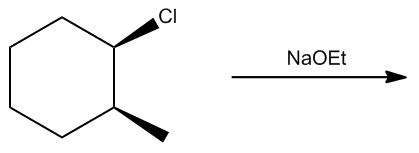
Zaitsev product
Video transcript
Now I've given you an example here of basically an alkyl halide with a nucleophile. Let's use the big daddy flowchart to figure out what mechanism this would be. So let's go ahead and ask our first question. Notice that my nucleophile is NaOET. Is that negatively charged or is that neutral? For those of you that said neutral, you're forgetting that sodium can dissociate. So what it's actually going to look like is OET-, so it's going to be a negatively charged nucleophile. That's going to go down the left-hand side of the flowchart. Okay? So let's go to step 2. Step 2 is NaOAT one of my bulky bases? No. Okay? We have a list of bulky bases. NaOAT is not one of them. So I'm just going to say no. Let's go to my 3rd question. What type of alkyl halide do we have or what type of leaving group? Well, this carbon right there is attached to 2 other carbons, 1, 2, so this would be a secondary alkyl halide. So do we know the mechanism now? No, we have to ask one more question. The last question is, I'm just going to put it down here, is my base a better nucleophile or a better base? So for this, you have to remember what were the strong bases. Is NaOET one of those strong bases? Yes, it is. Remember that one of the strong bases was oxides. Oxides have the general formula of OR- and that's exactly what we have. We have OET, which is an ethyl group, negative. So this is an oxide, so this is going to favor E2. Alright, cool. So now we've got E2. Now we have to figure out how do we actually draw the mechanism for this and how do we predict the products. Do you guys remember what the first step of E2 is? Figure out how many different beta protons I have. Okay? So what do we got? We've got 2 different beta carbons. Let's say this is beta 1 and let's say this is beta 2. Okay? Those are my 2 different options. Do both of them have hydrogens on them? Yes, they both do. On the green one, I've got a hydrogen towards the front and a hydrogen towards the back. On the red one, I just have a hydrogen towards the back. So are we ready to eliminate yet? We have to ask ourselves one more question. Now that we know all of our beta protons, which is 3, how many of them could actually react in an E2 reaction using the anticoplanar rule? Remember you always have to think of that rule. The answer is 2 of these could react. I could eliminate in the green direction with this one right there and I could also eliminate in the red direction using that one right there. The reason is because my chlorine is facing towards the front, so I can only eliminate with a hydrogen that's facing towards the back. Okay? So now that I know that, let's go ahead and draw one of the mechanisms. We don't have to draw both, but let's just draw one of them and then predict the products. So the mechanism
The exception to this rule comes with the use of bulky bases. These promote the formation of the les substituted product.
- The most common bulky bases are lithium diisopropylamide (LDA) and tert-butoxide (t-BuO-)
The less substitued product is called the Hofmann product. Let's draw the Hofmann product of the following reaction:

Hofmann product
Video transcript
Now one more thing, it turns out that there's an exception to this rule because guess what? Organic chemistry always has one exception. Right? So the exception is going to be unless we're using a bulky base. Bulky bases, remember that they're not very nucleophilic. They're very basic. They're very good at pulling off protons, but they're not very good at donating electrons. So what that means is that a bulky base is going to promote the formation of the less substituted kinetic product. What does kinetic mean? It means it's the one with the lowest activation energy. The one that's the easiest to grab, even though it's not stable at the end, is going to be the one that is favored at the end. So let me show you guys how this works. Let's say that here I'm reacting with a bulky base terbutoxide. So that's my terbutoxide molecule. Notice that it's kind of bulky. It's got an O and it's got that tert-butyl group on the side.
Let's do the same reaction. I have my green hydrogen her
Thermodynamic vs. Kinetic Product
Using a Free Energy Diagram to explain thermodynamic vs. kinetic products.
Video transcript
The last thing I want to do is show you guys an energy diagram that I'm going to sketch up really quick, explaining what these words mean between thermodynamics and kinetics because this is going to come up more in Orgo 1 and in Orgo 2. So I just want to show you guys, remember that you have an energy diagram, and the way that it works is that you have some kind of spontaneity here, and you have a reaction coordinate here where, basically, at the end, I have a double bond, and at the beginning, I have just my alkyl halide plus the nucleophile. Okay? So what I want to show you guys is that this is a concerted reaction, so it all happens at the same time. I'm only going to have one hump, I'm going to have one transition state. Remember that E2 just has a transition state. The thing is that what it looks like, what the kinetic versus the thermodynamic energy diagrams look like, are going to be different. So, for the thermodynamic one, I'm going to start up here at this energy level. I'm going to pass through a pretty big hump in energy and then I'm going to gain a lot of energy at the end because my double bond is overall going to save me some energy. So that's what the elimination product would look like for the first one. Okay? Are you guys following so far? Cool.
Now for the second one, what I would find is that my energy level is at the same place at the beginning. Okay, so it's right here; there's my kinetic pathway. But it turns out that for the kinetic pathway, I'm going to have a much lower activation energy, but then I'm also going to have a much lower gain in stability. Okay? So what you can tell is that check out the enthalpy for a second or the spontaneity. Okay? Overall, I'm going to gain, I'm sorry, it's supposed to be change, I'm going to gain, I'm sorry, it's supposed to be change in ΔG. Okay? Overall, my product for the red, for the Zaitsev product, is going to be overall more stable at the end. I'm going to gain more ΔG or more free energy by going in that direction than by going in this direction. Is that making sense so far? So basically, the red one is overall more stable than the green. Okay? But what we're also going to notice is that the activation energy of the first one is much higher and the activation energy of the second one is much lower. Okay? So the green is what we would call kinetic control. Kinetic control means that all I'm looking at is the one with the lowest activation energy. Okay? I'm saying whichever one is the easiest one to form, that's the one that's going to be favored. Okay?
Whereas thermodynamic control, I'm just going to put here thermal, is the one that looks at the overall lowest ΔG. The one that changes, that gets the most free energy at the end, that's the most stable at the end, that's going to be the one that I favor. Okay? And that's the difference between Zaitsev and Hoffman. Basically, Zaitsev is thermodynamic control, where all I care about is the stability of the end product. Okay? Whereas Hoffman is going to be kinetic control because all I'm going to care about is the one that's the easiest to form or the one with the lowest activation energy. Is that difference kind of making sense? Now the reason I'm telling you guys this is because this is going to come up later when we talk about other reactions in Orgo 2. There's going to be kinetic control and thermodynamic control, and it's going to be the same kind of principle where I'm looking at either the stability beginning. Alright. So I hope I didn't confuse you guys here. I just really want you guys to understand the difference between and how one is thermodynamic and one is kinetic between Zaitsev and Hoffman. Alright. So let's go ahead and do some practice problems based on Zaitsev's rule.
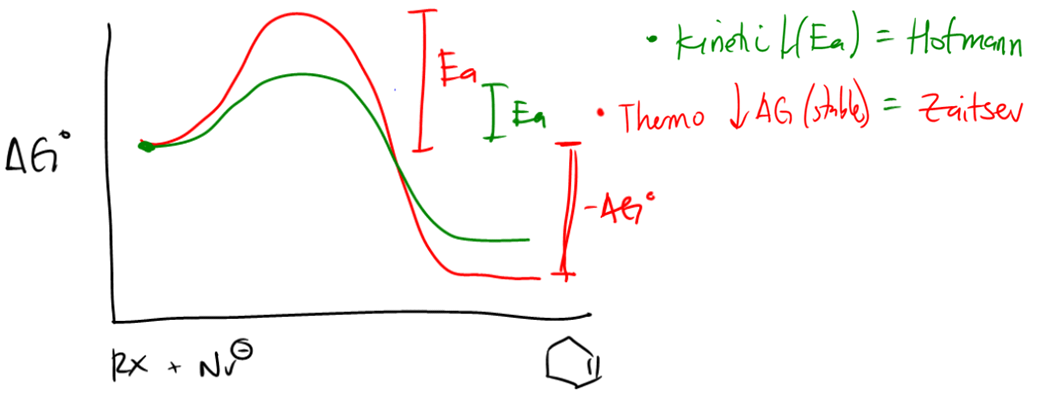
- The Zaitsev product is also known as the thermodynamic product, since it is the one that releases the most free energy overall (most negative ΔG°).
- The Hofmann product is also known as the kinetic product, since it is the one that overcomes the lowest activation energy (Ea).
Practice
What is the major product of the reaction?
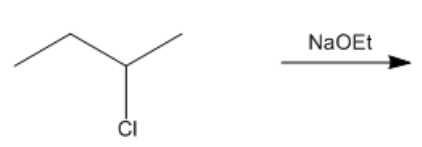


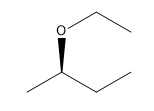

What is the major product of the reaction?



What is the major product of the reaction?
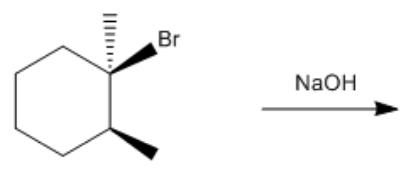

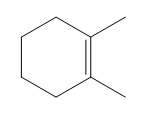


Do you want more practice?
More setsHere’s what students ask on this topic:
What is Zaitsev's rule in organic chemistry?
Zaitsev's rule states that in an elimination reaction, the more substituted alkene (the one with more alkyl groups attached to the double-bonded carbons) will be the major product. This is because more substituted alkenes are generally more stable due to hyperconjugation and inductive effects. Therefore, when multiple alkenes can be formed, the one with the greater number of substituents around the double bond will predominate.
 Created using AI
Created using AIHow do you determine the major product in an elimination reaction using Zaitsev's rule?
To determine the major product in an elimination reaction using Zaitsev's rule, identify all possible alkenes that can form. Then, count the number of alkyl groups attached to the carbons of the double bond in each alkene. The alkene with the most alkyl groups (i.e., the most substituted) is the Zaitsev product and will be the major product. This product is more stable due to hyperconjugation and inductive effects.
 Created using AI
Created using AIWhat is the difference between Zaitsev and Hoffman products?
The Zaitsev product is the more substituted and more stable alkene formed in an elimination reaction, while the Hoffman product is the less substituted and less stable alkene. Zaitsev products are favored under thermodynamic control, where the stability of the final product is the main factor. Hoffman products are favored under kinetic control, where the pathway with the lowest activation energy is preferred.
 Created using AI
Created using AIHow does thermodynamic control relate to Zaitsev's rule?
Thermodynamic control in elimination reactions relates to Zaitsev's rule because it favors the formation of the most stable product, which is the Zaitsev product. Under thermodynamic control, the reaction conditions allow the system to reach the most stable state, resulting in the major product being the more substituted and stable alkene. This is due to the lower free energy of the Zaitsev product compared to other possible products.
 Created using AI
Created using AICan you explain the energy diagram for Zaitsev and Hoffman products?
In an energy diagram for elimination reactions, the Zaitsev product has a higher activation energy but results in a more stable final product with lower free energy. The diagram shows a higher peak for the transition state but a lower final energy level. In contrast, the Hoffman product has a lower activation energy, making it easier to form initially, but it results in a less stable final product with higher free energy. The diagram for the Hoffman product shows a lower peak for the transition state but a higher final energy level.
 Created using AI
Created using AIYour Organic Chemistry tutors
- When 2-bromo-3-phenylbutane is treated with sodium methoxide, two alkenes result (by E2 elimination). The Zait...
- Predict the elimination products of the following reactions. When two alkenes are possible, predict which one...
- What is the major elimination product obtained from the reaction of each of the following alkyl halides with h...
- For each of the following alkyl halides, indicate the stereoisomer that would be obtained in greatest yield in...
- For each of the following alkyl halides, indicate the stereoisomer that would be obtained in greatest yield in...
- a. What is the major product obtained when each of the following compounds undergoes an E2 reaction with metho...
- Draw the elimination products for each of the following E2 reactions; if the products can exist as stereoisome...
- When 2-bromo-2,3-dimethylbutane reacts with a strong base, two alkenes (2,3-dimethyl-1-butene and 2,3-dimethyl...
- What is the major elimination product obtained from the reaction of each of the following alkyl halides with h...
- Two elimination products are obtained from the following E2 reaction: CH3CH2CHDCH2Br→CH3O− a.What are the eli...
- What is the major elimination product obtained from an E2 reaction of each of the following alkyl halides with...
- What is the major elimination product obtained from an E2 reaction of each of the following alkyl halides with...
- What products will be obtained from the E2 reaction of the following alkyl halides? b.
- Draw the major product obtained when each of the following alkyl halides undergoes an E2 reaction: a.
- Draw the major product obtained when each of the following alkyl halides undergoes an E2 reaction: b.
- Draw the major product obtained when each of the following alkyl halides undergoes an E2 reaction: f.
- (••) Predict the major product(s) of the following elimination reactions, paying close attention to the stereo...
- a. What is the major product obtained when each of the following compounds undergoes an E2 reaction with metho...
- Which alkyl halide in each pair is more reactive in an E2 reaction with hydroxide ion?a. <IMAGE>b. <I...
- Which alkyl halide in each pair is more reactive in an E2 reaction with hydroxide ion?a. <IMAGE>b. <I...
- Which alkyl halide in each pair is more reactive in an E2 reaction with hydroxide ion?c. <IMAGE>d. <I...
- For each of the following alkyl halides, indicate the stereoisomer that would be obtained in greatest yield in...
- For each of the following alkyl halides, indicate the stereoisomer that would be obtained in greatest yield in...
- What is the major product formed when the following compounds undergo an E1 reaction? a.
- Draw the major product obtained when an alkyl halide in [PROBLEM 9-83] undergoes an E1 reaction. d.
- Predict the products of E1 elimination of the following compounds. Label the major products. (c) (CH3)3C-CH(C...
- What is the major product formed when the following compounds undergo an E1 reaction? c.
- (••) Predict the major product(s) of the following elimination reactions, paying close attention to the stereo...
- What is the major product formed when the following compounds undergo an E1 reaction? b.
- (••) Predict the major product(s) of the following elimination reactions, paying close attention to the stereo...
- For each of the following compounds, draw the product that forms in an E2 reaction and indicate its configurat...
- When (1-bromoethyl)cyclohexane is heated in methanol for an extended period of time, five products result: two...
- Predict the products of E1 elimination of the following compounds. Label the major products.(a) <IMAGE>...
- (•••) When using sulfuric acid, but in the absence of other nucleophiles like water or bromide ion, less stabl...
- For each of the following reactions, draw the major elimination product; if the product can exist as stereoiso...

